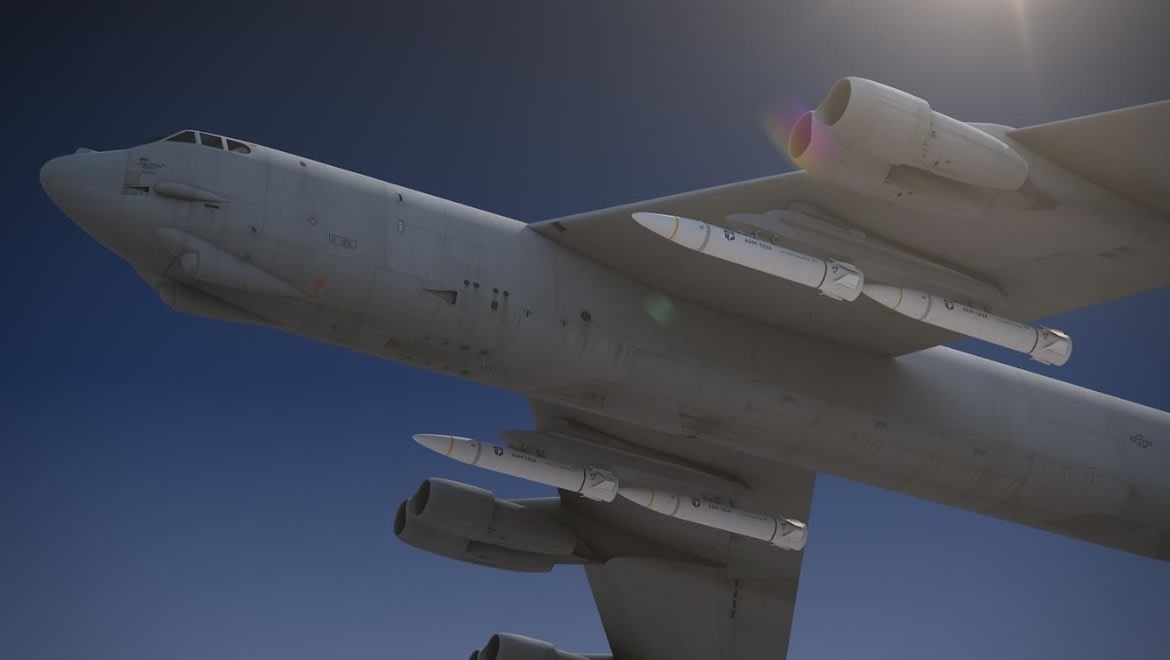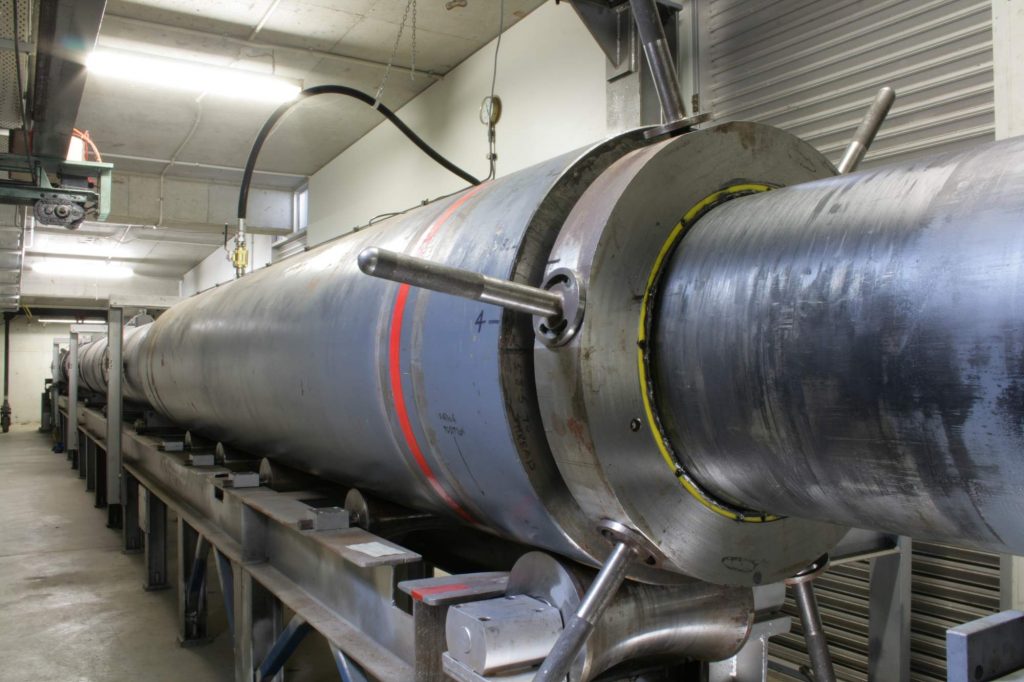In Focus
The race to hypersonic

As China edges closer to mastering untrackable, un-interceptable missiles, Australia is leading the fightback to master the technology.
Last July, China tested a new generation of hypersonic missiles so advanced it left the US’ top commanders scratching their heads. The warhead was blasted off into space before completing a partial orbit of the Earth at five times the speed of sound. What made the flight so unique was that the “glide vehicle” – unlike old-fashioned ballistic missiles – could be steered in mid-air, allowing it to evade interception like a fighter pilot twisting and turning in a dogfight. General Mark Milley, the US’ highest-ranking military officer, candidly admitted the experiment was “very concerning” and compared it to the Soviet Union’s American-beating launch of the Sputnik satellite in 1957. “It has all of our attention,” he said.
While the US and its allies may have been surprised at China’s supersonic progress, it’s not as if they hadn’t been preparing for this moment. A hypersonic arms race has been quietly taking place for the past decade because whoever perfects the technology first will have access to an undetectable, un-interceptable weapon capable of carrying nuclear explosives. Or, as Doug Graham, Lockheed Martin’s vice president for advanced programs, puts it diplomatically to me, “We’re in a situation where we have an urgent national security imperative to get serious and field these capabilities.”
Graham is one of the key figures globally leading the charge to help Western countries catch up and reach the US’ target of perfecting hypersonic missiles by next year. He says China shouldn’t underestimate the resolve of the West. “In the last several years, there has been significant investment, literally billions of dollars. We’ve made pretty rapid progress building on the heritage of research created over the last few decades. In the United States and here in Australia, the decision has been made that it’s time to reinvigorate our investment, which has been a little bit episodic over the years.”
Much of that research – perhaps surprisingly – is happening here in Australia, which has long marked itself out as one of the great world leaders in the technology. Our history can be traced back to the legendary Ray Stalker, who in 1988, became Australia’s first professor of space engineering and designed the pioneering wind tunnels required to test hypersonic flight. Today, the University of Southern Queensland has its own game-changing wind tunnel that can simulate the effect of Mach 5 speeds on vehicles and the heat it generates. USQ is also being funded by the federal government to go one step further and develop a drone to travel at 12 times the speed of sound. It’s all dovetailing with the mountains of testing conducted by primes such as Lockheed Martin to close the gap, backed by hundreds of millions of dollars of federal funding. “It’s not here by accident,” enthuses Graham. “The Australian government is serious about fostering the innovation of a number of smaller and bigger companies to address these critical problems.”

How exactly, though, does hypersonics work? Well, in many ways, travelling beyond Mach 5 is nothing new. When John Glenn came hurtling back to Earth in 1962 from the first crewed flight around Earth, his capsule entered the atmosphere at hypersonic speeds. Old fashioned intercontinental ballistic missiles – the current vehicle of choice for nuclear – are also hypersonic by their very nature. What makes this next generation of vehicles so different is that they can operate at speeds of 3,500mph – or a mind-boggling one mile (or 1.6 kilometre) per second – all while changing directions sharply in a tiny package. And because their flight paths change as they travel, and because they operate in a sweet spot in the sky lower than ballistics, they can’t be readily tracked, making them effectively invisible.
There are currently two major ways this could be achieved. The first, known as a glide vehicle, sees a rocket blast into the sky before releasing a separate hypersonic missile that has built up enough velocity to travel under its own speed. The two-step system means it can cruise along in the upper atmosphere with enough atmosphere to maintain lift but without too much to create drag. Examples include Russia’s Avangard, the US Navy’s Conventional Prompt Strike system and China’s aforementioned Dongfeng-17.
The second is a hypersonic cruise missile, which would see a rocket blast to Mach 5 before using an air-breathing engine, or scramjet, to maintain its momentum. Because the vehicles ingest air, they require much smaller launch rockets than glide vehicles. It builds on the technology pioneered by Stalker decades ago. Already, Lockheed Martin has conducted successful test flights of its own Hypersonic Air-breathing Weapon Concept, known as HAWC, that went beyond Mach 5 and hit a peak altitude of 65,000 feet. Morris is hopeful the experiments will soon move to Australia as the US increases its collaboration.
Lockheed Martin’s Dr Tony Lindsay is the director of STELaRLab, the business’ Melbourne-based R&D operations centre. He tells me he’s confident Australia has what it takes to move the research to the next stage as it edges towards deployment. “Ray Stalker was the father of hypersonics, so Australia has this proud history,” he says. “Australians are very good at using limited budgets to conduct world-class research. In 2012, the University of Queensland and a US team shared the von Karman award, one of the prestigious aerospace awards, for their work in getting air-breathing scramjets running. There’s a lot of investment going into high-end capabilities, with a very good science and technology base underpinning it.” Australia, he argues, can make a disproportionally significant contribution to the alliance through its R&D and whole system solutions. “We can’t afford to spend taxpayers’ money reinventing the wheel when the threat is so imminent, but, boy, can we make huge differences.”
But as everyone I speak to warns, smoothing out those final challenges to get those missiles combat-ready won’t be easy. Travelling so fast creates problems you don’t encounter when you fly at more pedestrian speeds. Chief among them is that the airflow over the vehicles creates so much friction it can increase temperatures to a sweltering 1,000 degrees. Specialist materials, using either high-temperature ceramics or “ablative” covers that slowly peel away during flight, will be required to insulate the craft to stop burning but in a way that is light enough to allow it to travel so quickly. The other issue is that modelling those effects on a computer is tricky, meaning progress will likely come through relentless trial and error flights as engineers nut out the finer details. “If you’re pushing something through the air, it heats up,” explains Dr Lindsay. “So terrifically good physics and modelling work must be done to work out how that heating occurs.”
And when we’ve finally mastered getting the tech to work, the next imperative will be working out how we track our enemies’ variants, if that’s even possible. Graham is open in admitting that deciphering how we defend against hypersonics is a challenge we’re still addressing. “We’ve invested a lot of money over the last several decades on missile defence capabilities, but they’ve largely been focused on ballistic missiles that follow nice, predictable trajectories. These new systems are very manoeuvrable. Consequently, it’s not a trivial issue to track them. One solution is advanced tracking and very agile interceptors to engage them mid-flight, areas Lockheed Martin has considerable capability in. As it turns out, Australia is also home to some of the world’s foremost tracking experts, so there’s yet another area of opportunity”.
But let’s peer into the future. What if multiple countries find themselves with a hypersonic nuclear attack but no defence? The rationale goes that it could lead to a situation where politicians have to make rapid, world-changing decisions on whether to launch a counterstrike without all the facts. Former British foreign secretary William Hague recently pointed out, “If you think … that your hardened silo will be taken out by a hypersonic missile … then you have to decide at an earlier stage of a crisis whether to launch.” Or in other words, it could leave military decisions resembling a deadly game of Deal or No Deal: leave it too late, and you risk taking a strike; but act too rashly, and you risk escalating a conflict between major nations.

General David Thompson, the US’ first vice chief of space operations, has been scathing over what he calls his nation’s defence “bureaucracy”, slowing down research. He admits the US is still trying to “figure out” what type of potential satellite constellation would be needed. “The fact that we have not needed to move quickly for a couple of decades — in the sense of a strategic competitor with these capabilities — has not driven us or required us to move quickly,” he said.
I ask Graham what the potential solutions could be? It is, he responds, complicated. “There’s a belief that the foundation for this is going to be in space,” he says, “and the United States has started programs to provide the tracking capability from both low and medium-Earth orbit. Today, we currently have satellites called the Space-Based Infrared System (SBIRS), which are responsible for identifying missile launches from anywhere in the world from when they’re launched. But it can’t track them after burnout through their trajectory. The US is starting programs to be able to do that essential ‘birth to death’ tracking.” Terrestrial and maritime radars will play a role, too, he adds, working in tandem with what’s going up in space. “There’s some incredibly interesting radar technology here in Australia that I think could be a key element of an architecture to look at how we defend ourselves.”
Just before this article went to print, things have accelerated quickly. Australia’s hypersonic research transitioned from being one that was predominately partnered with the United States – as part of the longstanding Southern Cross Integrated Flight Research Experiment (SCIFiRE) program – to including the UK as part of the AUKUS partnership. The federal government has pumped nearly $50 million into the $238 million “Trailblazer” research program to allow UNSW and the University of Adelaide to research next-generation tech including hypersonics. Finally, a new purpose-built research and collaboration facility, employing 60 staff, has opened in Brisbane. Australia, then, is seizing the initiative to cement its position as the leader in tackling the hypersonic threat among the big Western nations.
“The Russians have operational systems, the Chinese have operational systems – we don’t yet,” concludes Graham. “The Chinese have been flight testing frequently, a lot more than we have been, over the last couple of years. Without getting into numbers, the number of flight tests they do in one year, we haven’t done in the last 10. But that’s now starting to change. I have every confidence that our technology – and quite frankly, our people – along with the right sustained investment from the United States, and Australia, will be able to field these capabilities to meet our security needs rapidly.”













